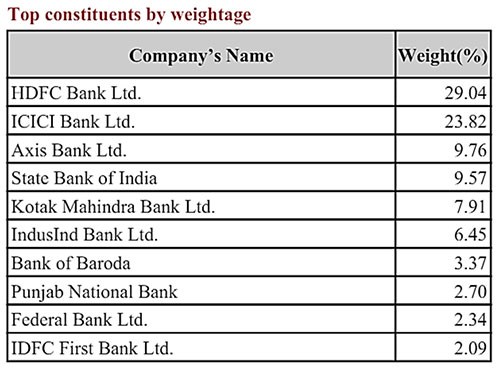Publish Date:
DSP Mutual Fund has launched DSP Nifty Bank Index Fund.
DSP Nifty Bank Index Fund is an open-ended scheme replicating/ tracking Nifty Bank Index.
The investment objective of the Scheme is to generate returns that are commensurate with the performance of the Nifty Bank Index, subject to tracking error. There is no assurance that the investment objective of the Scheme will be achieved.
Under normal circumstances, DSP Nifty Bank Index Fund will hold an allocation of 95% to 100% in Equity and Equity Related Securities of companies constituting Nifty Bank Index, the Underlying Index and 0% to 5% in Cash and Cash Equivalents.
[Read: Power Your Portfolio: 5 Sector & Thematic Funds to Consider Around General Elections]
DSP Nifty Bank Index Fund will be managed passively with investments in stocks in the same proportion as in Nifty Bank Index.
The investment strategy would revolve around minimizing the tracking error through periodic rebalancing of the portfolio, taking into account the change in weights of stocks in the indices as well as the incremental collections / redemptions in the Scheme.
A small portion of the net assets will be held as cash & cash equivalent. The scheme's investment strategy may be reviewed and modified as deemed necessary in the best interest of unit holders and market conditions.
DSP Nifty Bank Index Fund is benchmarked against Nifty Bank TRI. The following stocks are currently the top constituents of the Nifty Bank Index.
 Data as of May 15, 2024
Data as of May 15, 2024
(Source: niftyindices.com)
DSP Nifty Bank Index Fund will be managed by Mr Anil Ghelani and Mr Diipesh Shah.
DSP Nifty Bank Index Fund is open for subscription from May 15, 2024 to May 27, 2024. The fund will reopen for continuous sale and repurchase within 5 days from the date of allotment.
The fund offers Direct Plan and Regular Plan. Under each plan the fund offers Growth option only.
The minimum subscription amount is Rs 100/- and in multiples of Re. 1 thereafter.